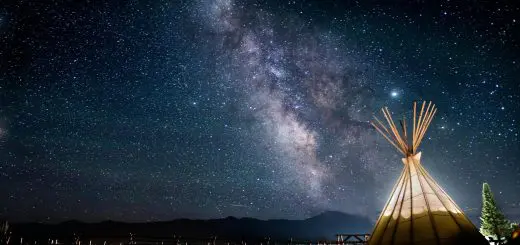What Was the Impact of Colonization on the Americas?

Looking for more amazing products? Check out our online store and explore our collection here! Happy shopping!
Before diving in, please note: This post is for informational purposes only. If you’d like to know more about how we approach topics, feel free to check out our friendly Disclaimer Page.
Hey there, amazing readers! 
We’re committed to delivering quality posts, and your support (even just sticking around despite the ads) means everything to us. So, bear with us, and thanks for helping us keep the good vibes rolling. Now, on to the fun stuff!
TRANSLATE BUTTON AT THE END OF THE ARTICLE
A Quick Overview
The impact of colonization on the Americas is vast and multifaceted.
From the moment European powers set foot on these lands, the course of history changed dramatically.
The arrival of European explorers and settlers didn’t just alter the physical landscape; it transformed cultures, economies, and societies.
Understanding this legacy is crucial.
It helps us grasp the complexities of today’s world and fosters appreciation for the diverse tapestry that is the Americas.
So, let’s dive into this topic and uncover how colonization affected the land, its people, and its future.
Introduction: Understanding Colonization’s Legacy in the Americas
Colonization was not a mere historical footnote; it was a pivotal moment that reshaped the Americas entirely.
Before Columbus sailed the ocean blue in 1492, the continent was home to numerous Indigenous cultures, each with its own rich history, languages, and social structures.
When European explorers arrived, they brought with them not just their ships and ambitions but also a new way of life that would clash with those already thriving in the Americas.
The legacy of colonization isn’t just about the past.
It reverberates through modern society, influencing everything from politics to culture.
As we dig deeper, we’ll discover how colonization created a complex web of interactions among Indigenous peoples and European settlers, resulting in lasting changes to the Americas.
The Arrival of European Powers: A New Era Begins
In the late 15th century, European powers like Spain, France, and England sought new trade routes and resources.
Columbus’s famous voyage opened the floodgates for exploration.
But what did this mean for the Americas?
For many Indigenous people, it was the beginning of an era filled with both opportunity and adversity.
The Spanish were among the first to establish settlements, claiming vast territories.
The Treaty of Tordesillas, agreed upon by Spain and Portugal, divided the New World for exploration and colonization.
This agreement marked the official beginning of European dominance in the Americas.
The arrival of these explorers wasn’t just about claiming land; they brought with them diseases that would decimate Indigenous populations.
Smallpox, influenza, and measles swept through communities with no immunity, leading to catastrophic declines in population.
European powers established trade networks that connected the Americas to Europe and Africa.
This new economic system began to reshape the very fabric of life in the Americas.
The introduction of new goods, like sugar and tobacco, created lucrative markets, often at the tremendous cost of Indigenous labor and lives.
As European settlements grew, conflicts arose.
Competition for resources led to wars and skirmishes.
The stage was set for a dramatic transformation of the continent, one that would impact generations to come.
Indigenous Civilizations: Thriving Before Colonization
Prior to European contact, the Americas were home to a wealth of diverse civilizations.
From the intricate societies of the Aztecs and Maya to the complex networks of the Iroquois Confederacy, Indigenous peoples had developed advanced agricultural methods, trade routes, and social structures.
Take the Inca Empire, for instance.
This remarkable civilization mastered high-altitude farming and established an extensive road network.
Their accomplishments in engineering and architecture are still admired today.
These cultures flourished, cultivating crops like maize, beans, and squash long before Europeans arrived.
Indigenous peoples had rich spiritual traditions and profound connections to their land.
They utilized natural resources sustainably, ensuring the environment thrived alongside their communities.
Their knowledge systems, passed down through generations, reflected a deep understanding of the ecosystems they inhabited.
However, European colonization disrupted these flourishing societies.
The arrival of settlers and explorers marked the beginning of a harsh new reality.
The complex social structures and rich histories of these peoples were often overlooked or dismissed by Europeans, who viewed them through a lens of superiority.
The Cultural Exchange: Ideas, Goods, and Innovations
Colonization brought about a cultural exchange like no other.
Europeans and Indigenous peoples traded not just goods but also ideas.
This exchange resulted in a blending of cultures that shaped the Americas’ future.
From the European perspective, the Americas were a treasure trove of resources.
They introduced horses, cattle, and new agricultural practices.
The horse revolutionized transportation for many Indigenous groups, enhancing mobility and altering hunting practices.
Conversely, Indigenous peoples introduced Europeans to maize, potatoes, and tomatoes.
These crops would eventually become staples in European diets, forever changing culinary traditions.
Imagine a world without pizza or french fries – hard to fathom, right?
This cultural interchange extended beyond food.
Artistic expressions began to blend, with Indigenous motifs appearing in European art and architecture.
Languages intermixed, leading to the creation of new dialects.
It was a fascinating exchange, even if rooted in conflict and exploitation.
Despite the benefits of this cultural blending, it came with profound consequences.
The imposition of European culture often marginalized Indigenous traditions, leading to the loss of languages, practices, and identities.
Economic Transformation: From Subsistence to Trade
The arrival of European powers spurred a significant economic transformation in the Americas.
Before colonization, many Indigenous communities practiced subsistence agriculture, focusing on local needs and sustainability.
However, with the influx of Europeans, the economic landscape shifted dramatically.
The introduction of cash crops like sugar, tobacco, and cotton became the driving force behind colonial economies.
European settlers began to prioritize these valuable exports, often at the expense of Indigenous agricultural practices.
They established plantations, which relied heavily on enslaved labor to maximize profit.
This shift also paved the way for the transatlantic slave trade.
The demand for labor in the Americas led to the forced transport of millions of Africans to work on plantations, creating a new economy built on exploitation and suffering.
Indigenous peoples were often displaced from their lands to make way for these plantations.
Their traditional farming methods were replaced with monocultures that prioritized profit over sustainability, causing long-term ecological consequences.
As trade networks expanded, the Americas became increasingly integrated into the global economy.
This transformation brought wealth to European powers but deepened inequalities and disrupted Indigenous ways of life.
Land Dispossession: The Impact on Indigenous Communities
One of the most devastating impacts of colonization was land dispossession.
As settlers arrived, they claimed vast territories, often disregarding the rights and sovereignty of Indigenous peoples.
Phrases like "manifest destiny" justified the belief that Europeans were entitled to occupy the land.
Treaties were often signed under duress or in bad faith.
Indigenous communities found themselves forcibly removed from their ancestral lands.
Some were pushed into reservations, isolated from their traditional territories and resources.
This loss of land had dire consequences.
Indigenous peoples were uprooted from their cultural and spiritual connections to the land.
Their traditional practices, such as hunting and gathering, were severely disrupted, leading to food insecurity and a loss of identity.
Land dispossession also fueled conflict between settlers and Indigenous communities.
Resistance movements emerged, with tribes fighting to reclaim their homelands.
These struggles often resulted in brutal confrontations, further exacerbating tensions.
As time went on, the legacy of land dispossession continued to impact Indigenous peoples.
Issues surrounding land rights remain a contentious topic today, as many communities seek to restore their connections to the lands from which they were forcibly removed.
Religious Conversion: Faith and Spirituality Intertwined
Colonization brought with it a wave of religious conversion efforts.
European powers viewed their mission as not only to conquer lands but also to "civilize" Indigenous peoples by introducing them to Christianity.
This often meant eradicating Indigenous spiritual practices and beliefs.
The Catholic Church played a significant role in this endeavor.
Missionaries established missions across the Americas, aiming to convert Indigenous peoples to Christianity.
While some individuals embraced the new faith, others resisted vehemently.
This clash of beliefs led to conflicts, with Indigenous peoples facing persecution for practicing their traditional religions.
Many cultural practices were seen as pagan or heathen, leading to efforts to suppress them.
Yet, the story of religious conversion is not solely one of oppression.
In many cases, Indigenous peoples adapted Christianity to fit their spiritual frameworks.
They blended elements of their traditional beliefs with new Christian practices, resulting in unique expressions of faith.
Today, many Indigenous communities continue to practice a syncretic form of spirituality, reflecting this complex history.
The interplay of Indigenous and European beliefs has shaped religious landscapes across the Americas.
The Role of Agriculture: New Crops and Farming Techniques
Agriculture underwent a significant transformation during and after colonization.
Before the arrival of Europeans, Indigenous peoples cultivated a wide variety of crops, using sustainable practices that nurtured the land.
The introduction of European agricultural techniques and crops led to a mix of old and new.
Europeans brought with them new technologies, such as plows and irrigation methods, which changed the way land was farmed.
They also introduced crops like wheat and barley, which began to take root in the Americas.
This shift altered food systems and diets across the continent.
Indigenous farmers, in many cases, adopted these new crops but often struggled to maintain traditional practices in the face of European demands.
The focus on cash crops for export undermined the diversity of local agriculture, impacting food security.
Over time, agricultural practices evolved, leading to the creation of hybrid farming systems that combined Indigenous knowledge with European techniques.
This blending resulted in more diverse agricultural practices, enriching the food landscape.
However, it’s crucial to acknowledge that these changes often came at a price.
Indigenous farming practices were disregarded, leading to a loss of traditional knowledge that could have fostered sustainable agricultural systems.
Demographic Changes: Population Shifts and Diversity
Colonization triggered dramatic demographic changes in the Americas.
The arrival of Europeans brought new populations to the continent, altering the social fabric of Indigenous societies.
However, these changes were not without consequences.
The introduction of European diseases decimated Indigenous populations, leading to significant declines in numbers.
Some estimates suggest that up to 90% of Indigenous peoples perished due to diseases brought by colonizers.
This catastrophic loss reshaped communities and ecosystems alike.
As European settlers migrated in waves, they established new societies, often pushing Indigenous peoples further from their traditional lands.
This migration introduced diverse cultures, languages, and traditions, creating a tapestry of new identities.
The forced migration of enslaved Africans added another layer to this demographic shift.
The transatlantic slave trade brought millions of Africans to the Americas, creating a complex interplay of cultures that would shape the continent’s future.
The legacy of these population shifts is still evident today.
The Americas are a melting pot of cultures, reflecting the rich histories of Indigenous peoples, European settlers, and African descendants.
This diversity is a hallmark of modern society and a source of resilience.
Language and Identity: The Blend of Cultures
Language is a powerful marker of identity, and colonization had a profound impact on the languages spoken in the Americas.
Indigenous languages, once thriving, faced significant decline due to European dominance.
As European settlers established themselves, they imposed their languages.
Spanish, English, French, and Portuguese became the dominant tongues, often relegating Indigenous languages to obscurity.
By the 21st century, many Indigenous languages are endangered or extinct.
Yet, the story doesn’t end there.
The blending of cultures also birthed new languages and dialects.
Creole languages emerged, combining elements from Indigenous languages, European tongues, and African influences.
This linguistic fusion reflects the complex interactions among different cultures.
Languages carry with them histories and identities.
The loss of an Indigenous language can mean the loss of cultural practices, stories, and traditions.
Revitalization efforts are underway in many Indigenous communities, aiming to reclaim and preserve their languages.
Today, language serves as a bridge between cultures.
It fosters understanding and appreciation for diverse backgrounds.
The resilience of Indigenous peoples and their commitment to preserving their languages is a testament to their enduring spirit.
Resistance and Resilience: Indigenous Responses to Colonization
The impact of colonization may have been devastating, but Indigenous peoples demonstrated remarkable resilience.
Throughout history, they have resisted colonization in various ways, from armed conflict to cultural preservation.
Many Indigenous groups fought back against encroachment on their lands.
Notable figures like Tecumseh and Sitting Bull rose to prominence, leading efforts to unite tribes against European settlers.
Their stories of bravery and resistance are still remembered today.
Cultural resilience is another powerful aspect of Indigenous responses.
Despite attempts to suppress their traditions, many Indigenous peoples have kept their cultural practices alive.
Festivals, ceremonies, and storytelling remain vital components of their identities.
The 20th century brought new challenges and opportunities for Indigenous peoples.
The civil rights movement and rising awareness of Indigenous rights led to increased activism.
Many communities sought to reclaim their lands, languages, and cultural practices, fostering a sense of empowerment.
Today, Indigenous movements continue to advocate for rights and recognition.
From land sovereignty to environmental conservation, Indigenous voices are increasingly heard in discussions about the future.
Their resilience and determination inspire change and foster a sense of hope.
Conclusion: Reflecting on a Diverse and Complex History
The impact of colonization on the Americas is undeniably complex.
It encompasses a wide array of experiences, from the vibrant cultures that thrived before European contact to the enduring legacies of resistance and resilience.
While colonization brought profound changes, it also sparked a cultural exchange that shaped the continent’s identity.
The blending of ideas, languages, and practices created a rich tapestry that continues to evolve.
As we reflect on this history, it’s essential to recognize the voices of Indigenous peoples.
Their stories, struggles, and triumphs remind us of the strength of human spirit and the importance of understanding our past.
In the end, the Americas are not just about colonization; they are about the diverse and vibrant cultures that emerged from that complex history.
By embracing this diversity, we can foster a more inclusive future, one that honors the legacies of those who came before us.

The Enlightenment Journey is a remarkable collection of writings authored by a distinguished group of experts in the fields of spirituality, new age, and esoteric knowledge.
This anthology features a diverse assembly of well-experienced authors who bring their profound insights and credible perspectives to the forefront.
Each contributor possesses a wealth of knowledge and wisdom, making them authorities in their respective domains.
Together, they offer readers a transformative journey into the realms of spiritual growth, self-discovery, and esoteric enlightenment.
The Enlightenment Journey is a testament to the collective expertise of these luminaries, providing readers with a rich tapestry of ideas and information to illuminate their spiritual path.
Our Diverse Expertise
While our primary focus is on spirituality and esotericism, we are equally passionate about exploring a wide range of other topics and niches 

To ensure we provide the most accurate and valuable insights, we collaborate with trusted experts in their respective domains 
Our blog originally focused on spirituality and metaphysics, but we’ve since expanded to cover a wide range of niches. Don’t worry—we continue to publish a lot of articles on spirituality! Frequently visit our blog to explore our diverse content and stay tuned for more insightful reads.
Hey there, amazing reader! 
Check out our store here and take a peek at some of our featured products below! Thanks for being awesome!










